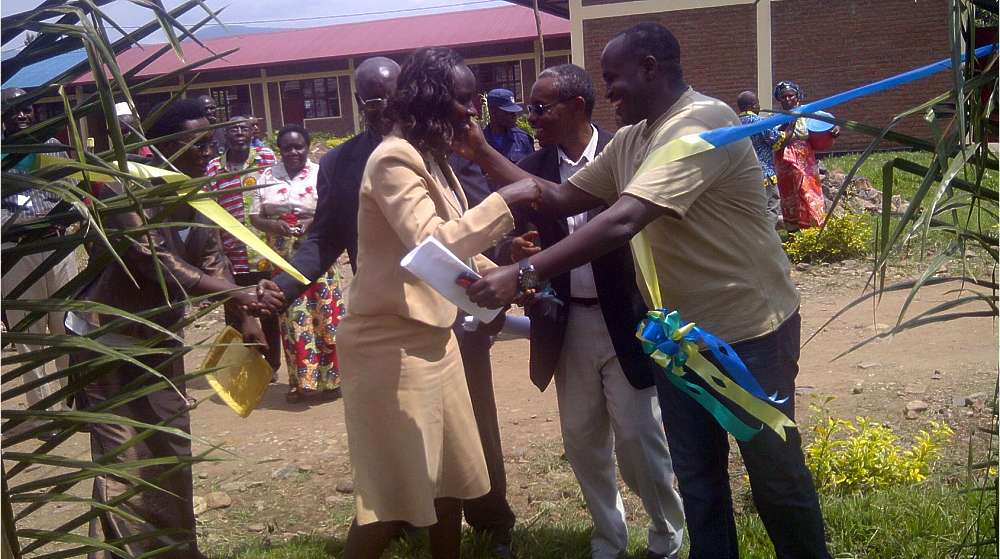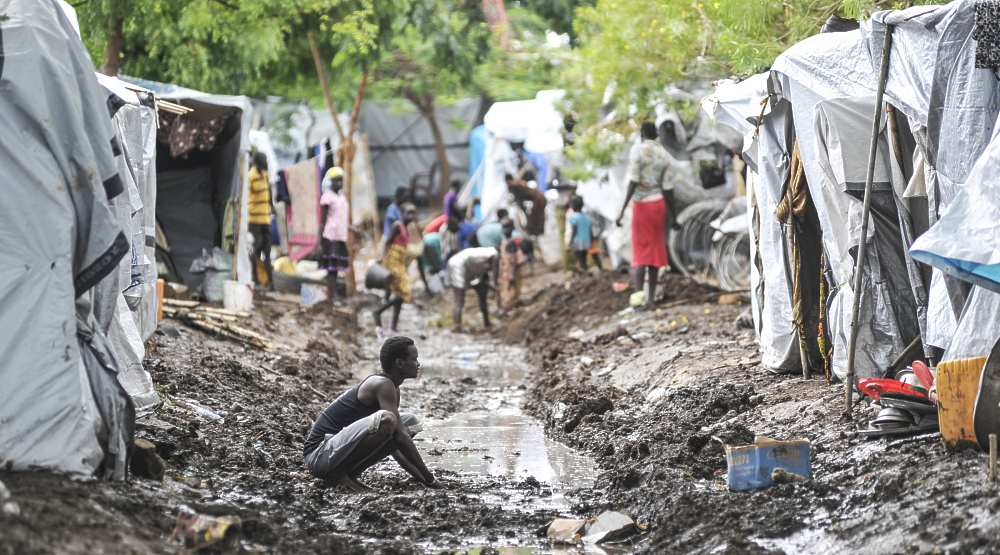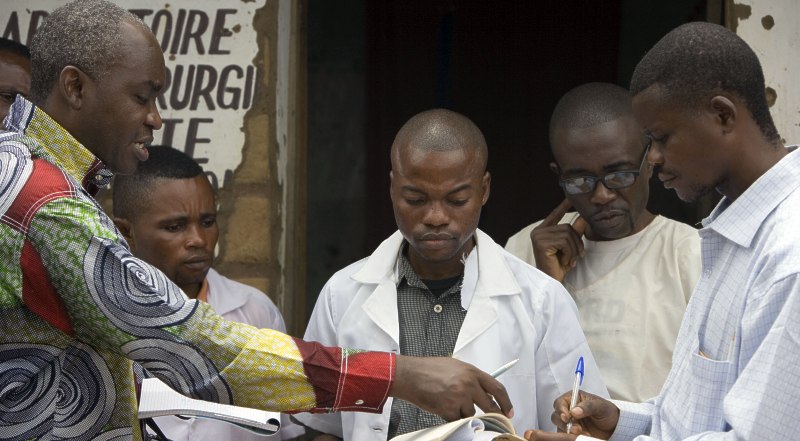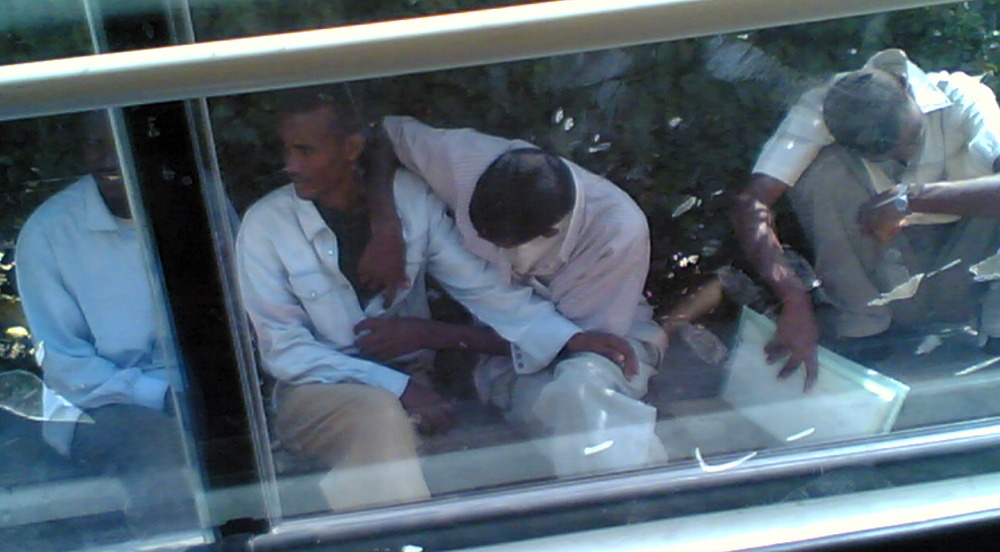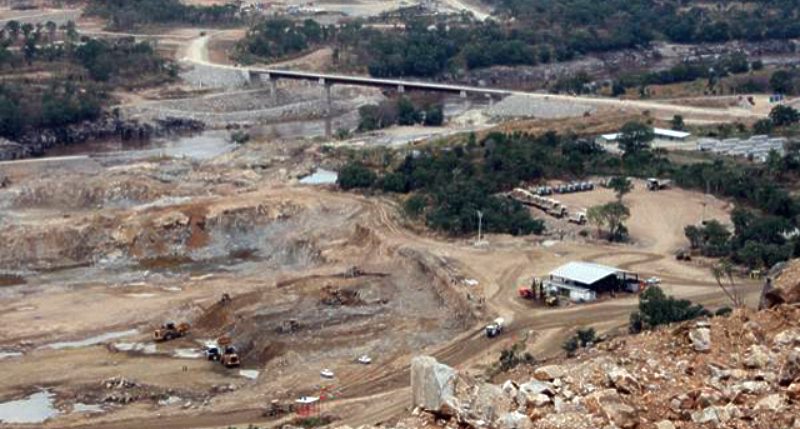|
Gambia Politics | Economy - Development The Gambia tackles poor governance afrol News / IMF Survey - Although the price of poor governance is difficult to quantify, the toll it takes on a country's progress can be substantial. In The Gambia over the past decade, a property seizure and a coup, among other events, led to major setbacks in overall economic performance and contributed to worsening poverty. But the country has persevered in its reforms and has taken relatively timely steps to address governance issues and win back donor support. In early July 2002, the International Monetary Fund (IMF) approved a three-year Poverty Reduction and Growth Facility Arrangement for US$ 27 million to help The Gambia make further progress on the economic front and improve its fiscal performance.Throughout the mid-1980s and early 1990s, The Gambia successfully implemented a wide range of financial and structural reforms. The country turned its economic fortunes around on the strength of its Economic Recovery Program, launched in 1985 and designed to restore financial stability and lay the foundation for sustained economic growth, and its Program for Sustained Development, begun in 1990, to stimulate private sector development. These back-to-back adjustment efforts benefited from sustained financial support and technical assistance from the IMF and other multilateral and bilateral creditors and donors. These early adjustment efforts reversed declines in GDP, and the economy recorded modest real growth, increasing imports to address supply constraints, lifting virtually all controls on interest rates, and eliminating external arrears while building up international reserves by the end of 1991/92. The country also made strides in improving its resource allocation, reducing price and other government controls; introducing a market-determined exchange rate, and liberalizing marketing arrangements for groundnuts - its principal cash crop. Privatization efforts, however, met with mixed results. The sale of The Gambia's Oilseeds Processing and Marketing Company (one of the largest public enterprises) to The Gambia Groundnut Corporation (a marketing monopoly owned by the Swiss firm Alimenta) lacked transparency and a support mechanism for farmers. These problems created an uneasy relationship between the government and Alimenta that later erupted into a major conflict between them. Shocks and reversals Generally favorable developments came to an abrupt halt in 1993, when The Gambia was buffeted by a series of external shocks and internal turmoil that would increase poverty and undo some of the progress made in developing a sound macroeconomic environment. The Gambia, a major regional trading center, saw its reexport activities - which accounted for about 80 percent of its exports and 35 percent of its imports - severely affected by a suspension of repurchases of the CFA franc notes (at the time the major trading currency in the country) outside the CFA zone; a tightening of border controls by Senegal; and a substantial devaluation of the CFA franc (in January 1994). The government, which since 1992 had been preparing a comprehensive plan to reduce poverty, approached donors for increased aid. However, shortly after a successful presentation of the plan to a roundtable donor meeting in Geneva, the democratically elected civilian government was toppled in a military coup in July 1994. Donors cut off all nonhumanitarian aid, leaving the new military government with no external resources to address poverty and no technical assistance to tackle the country's already weak institutional capacity. Political and other uncertainties rippled through the economy, resulting in lower growth and reversals in a number of other economic indicators. With the issuance of travel advisories, tourist arrivals into The Gambia were nearly halved in 1994/95, with a corresponding decline in tourist-related services. Real GDP, which had recovered significantly during the late 1980s and early 1990s, contracted by 4 percent in 1994/95 and, on average, remained low - below the rate of population growth - through 1997. With the poor performance of the reexport and tourism sectors, domestic government revenues also tumbled (declining by more than 4 percent of GDP during 1994/95 - 1995/96), and expenditure increased significantly - reaching a peak of 30 percent of GDP in 1995/96 and signaling the reemergence of severe financial imbalances. The overall deficit, excluding grants,more than quintupled, and the growth in broad money more than doubled in 1994/95, as the government increasingly resorted to the domestic banking system to fund its activities. As a result, the stock of government domestic debt doubled, rising to about 23½ percent of GDP at the end of 1997. Heavy domestic government borrowing also crowded out private sector credit, which contracted during the period. Getting back on track When a new government assumed office in 1997, following elections marred by a ban on several major opposition parties, the highest priorities were to halt the economic slide and restore relations with the donor community. With a resumption of some aid from the international community, including an Enhanced Structural Adjustment Facility (ESAF) Arrangement with the IMF in 1998, the authorities launched a comprehensive economic program to reestablish a sound and sustainable macroeconomic environment supported by structural reforms. The new effort focused on improving public finances and strengthening the role of the private sector in the economy.When the IMF recast its financial assistance for low-income countries to give greater attention to fighting poverty, The Gambia developed a new poverty reduction strategy and sought support from the IMF under its Poverty Reduction and Growth Facility (PRGF). In 2000, The Gambia submitted its new poverty alleviation strategy to the Executive Boards of the IMF and the World Bank as its interim poverty reduction strategy paper (PRSP). The two boards reviewed the interim PRSP and concurrently approved, in November 2000, The Gambia's eligibility for debt relief (SDR 67 million in net present value terms or SDR 91 million in current value) under the enhanced Heavily Indebted Poor Countries (HIPC) Initiative. With the support of the IMF and other donors, The Gambia made substantial progress in reducing macroeconomic imbalances and tackled a range of structural and institutional reforms. Fiscal policy was tightened appreciably; consumer price inflation remained below 4 percent a year during 1998-2001, thanks partly to favorable weather; exports and imports recovered; external balances improved with a reduction in the current account deficit; and international reserves rose further. Real GDP growth increased to an average 5¼ percent annually. Marketing reforms, provision of extension services, improved inputs, and access to credit spurred a recovery in the agricultural sector, and a marked increase in tourist arrivals helped boost growth in tourism. The Gambia also further liberalized its trade regime, reducing tariffs to 18 percent from a top rate of 90 percent, and cutting the number of tariff bands to 3 from more than 30. The tariff reforms, in combination with a 4 percent depreciation in the dalasi, boosted international competitiveness. In other areas, the country moved to improve the quality of its data, agreeing to participate in the IMF General Data Dissemination System (a yardstick to guide countries that wish to bring their data up to international standards); introduced measures to strengthen its national accounts; and took steps to improve price, monetary, balance of payments, and customs data. To strengthen the private sector's role in the economy, new laws were enacted to bolster monetary policy operations and the supervision of financial institutions; establish a regulatory and privatization framework and support institutions; and set up a one-stop investment center and exportprocessing zone. The road to economic recovery and reform was not without its bumps, however. In 1999, the government seized property belonging to The Gambia Groundnut Corporation without compensation. Alimenta took the case to the International Center for Settlement of Investment Disputes, but the government, in collaboration with the European Union (the lead donor in the groundnut sector) and the IMF, reached an out-ofcourt settlement. The incident prevented completion of the first review of the ESAF arrangement with the IMF, but the lessons from the experience led to reforms to make privatization more transparent and regulate economic activity more effectively. Under these new measures, plans are under way to privatize the former Alimenta assets (which reverted to government ownership as a result of the 2001 settlement) and other key enterprises, including the telecommunications sector. On the fiscal front, the picture was complicated by payments to Alimenta (the equivalent of 2 percent of GDP in 2001), a delay in donor disbursements, and shortfalls in customs revenue (in part a product of a poorly planned and executed preshipment inspection scheme). Picking up steam In recognition of the role that governance issues have played in the ups and downs of its recent economic history, The Gambia adopted a governance policy framework as one of the five pillars of its PRSP. Implementation of the governance program has been uneven and will likely remain a challenge, but it picked up momentum in April 2002 when the National Assembly approved a measure that enhances the role of local authorities in policy formulation and the budget process - key to the PRSP exercise. In June 2001 - in advance of presidential elections last year and of parliamentary and local elections this year - the government lifted its ban on the participation of some major opposition parties in the electoral process. This consolidation of the country's transition to democracy prompted the United States to normalize donor relations and restore economic aid, which had been suspended since the coup in 1994. Amid progress in restoring democracy and improving donor relations, and advances on a number of structural reforms, the government finalized its PRSP, which outlines a more comprehensive approach to poverty reduction and taps wider participation from civil society, including the poor. The authorities also committed themselves to a new adjustment and reform program supported by the IMF's PRGF and won assurances of more technical assistance from the IMF and other donors, focused on building up the country's institutional capacity. Broadly in line with the country's PRSP goals, the medium-term economic framework for 2002/03 - 2004/05 highlights a number of objectives: roughly 6 percent annual real GDP growth; 3¾ percent annual average inflation; an external current account deficit (excluding official transfers) of 10¼ percent of GDP by 2005; gross external reserves equivalent to five months of imports of goods and services; a reduction in the overall budget deficit (excluding grants) to 5 percent of GDP in 2002 and a further decline to 2 percent by 2005; marked increases in total and government investment (with projected increases, by 2005, of 22 percent and 7 percent, respectively); and a boost in the government saving-investment balance to improve the external current account position. As The Gambia moves ahead to consolidate economic growth and poverty reduction, increased donor support will be formalized at a planned September 2002 roundtable in Geneva. Efforts will also be made to improve the coordination of technical assistance to strengthen institutional capacity. The challenge now for The Gambia is to persevere with economic adjustment and reforms in the context of the PRSP, the enhanced HIPC Initiative, and the PRGF-supported program. Two key issues will be to avoid new governance lapses while mitigating existing ones and to resolutely reduce the government deficit and domestic debt, which will free up additional resources to help with poverty reduction. By Robin Kibuka and Meshack Tjirongo © afrol News / IMF Survey
Current afrol News Top Stories
|
front page
| news
| countries
| archive
| currencies
| news alerts login
| about afrol News
| contact
| advertise
| español
©
afrol News.
Reproducing or buying afrol News' articles.
You can contact us at mail@afrol.com



